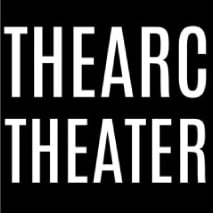Back to 11th Street Bridge Park Blog
Lessons from Copenhagen
Lessons from Copenhagen
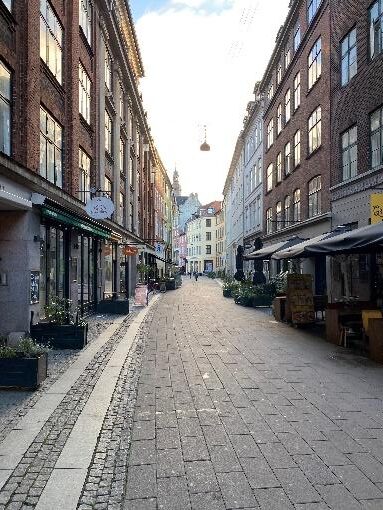 Last week, I had the honor of joining a delegation of parks, municipal leaders and funders to Copenhagen to learn about innovative approaches to city building that can enrich public life. This four-day tour was led by 8 80 cities, a Toronto based nonprofit whose goal is to ignite action and challenge the status quo to create healthier, more equitable, and sustainable cities for all people. Many thanks to the Ralph C. Wilson Jr. Foundation for supporting a passionate group working hard to realize civic spaces in Detroit and Buffalo. I was one of two park “experts” on the trip along with the incredible Carol Coletta who recently opened the new Tom Lee Park in Memphis. The parks delegation including representatives from the Detroit Riverfront Conservancy, Joe Louis Greenway and a new 100+-acre waterfront park on the shoreline of Lake Erie. I thought it helpful to share lessons learned that we incorporate in the states from what many consider a model city for walking, biking, transit and people centered design.
Last week, I had the honor of joining a delegation of parks, municipal leaders and funders to Copenhagen to learn about innovative approaches to city building that can enrich public life. This four-day tour was led by 8 80 cities, a Toronto based nonprofit whose goal is to ignite action and challenge the status quo to create healthier, more equitable, and sustainable cities for all people. Many thanks to the Ralph C. Wilson Jr. Foundation for supporting a passionate group working hard to realize civic spaces in Detroit and Buffalo. I was one of two park “experts” on the trip along with the incredible Carol Coletta who recently opened the new Tom Lee Park in Memphis. The parks delegation including representatives from the Detroit Riverfront Conservancy, Joe Louis Greenway and a new 100+-acre waterfront park on the shoreline of Lake Erie. I thought it helpful to share lessons learned that we incorporate in the states from what many consider a model city for walking, biking, transit and people centered design.
Building a Truly Green City
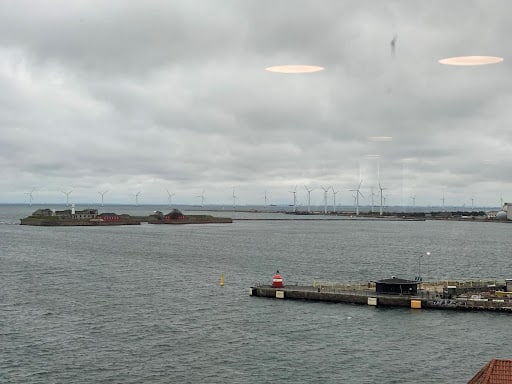 Our first day kicked off with a presentation by Monica Magnussen, Head of Copenhagen’s Climate and Urban Development Department. Monica shared how Copenhagen was aggressively tackling their goal to become the first carbon-neutral capital city by 2025 by establishing alternative energy sources like wind power (giant turbines line the city’s harbor views), reducing car traffic and building public transit. Municipal officials are addressing the city’s combined sewer overflow transforming a once polluted harbor into one that is clean enough to swim in (more on that later.) Back in the District, DC Water has taken a similar path building metro sized tunnels under the Anacostia River that have reduced overflow incidents by 85%. Thanks to the sustained efforts of advocates like our partners at the Anacostia Watershed Society, a swimmable Anacostia is right around the corner! Copenhagen is now expanding their city’s sustainability effort to include ways to mitigate every resident’s carbon footprint. Recognizing that we only have one planet, they are not making excuses that others must act first – a sign of true leadership.
Our first day kicked off with a presentation by Monica Magnussen, Head of Copenhagen’s Climate and Urban Development Department. Monica shared how Copenhagen was aggressively tackling their goal to become the first carbon-neutral capital city by 2025 by establishing alternative energy sources like wind power (giant turbines line the city’s harbor views), reducing car traffic and building public transit. Municipal officials are addressing the city’s combined sewer overflow transforming a once polluted harbor into one that is clean enough to swim in (more on that later.) Back in the District, DC Water has taken a similar path building metro sized tunnels under the Anacostia River that have reduced overflow incidents by 85%. Thanks to the sustained efforts of advocates like our partners at the Anacostia Watershed Society, a swimmable Anacostia is right around the corner! Copenhagen is now expanding their city’s sustainability effort to include ways to mitigate every resident’s carbon footprint. Recognizing that we only have one planet, they are not making excuses that others must act first – a sign of true leadership.
Cities for People
 Like Washington DC in the 1960’s, Copenhagen was building more and more freeways designing around the car instead of its residents. But then the most remarkable thing happened – thousands of residents came together to protest rising pedestrian fatalities and demanded a new future. City leaders listened and began building more bike infrastructure and spaces for humans (not vehicles.) Today, Copenhagen boasts that 75% of all trips are by bike, foot or transit. During our planning study, I saw parents biking with kids, shoppers hauling groceries home in a cart and the busiest bike rush hour ever. This is only possible due to the significant investments in infrastructure including bike lanes on almost every street and giant bike “highways” stretching across the city. On a chilly and rainy morning, architect and urban planner Lotte Bech took us on a bike tour across multiple neighborhoods which included an interactive playground where children learned bike safety and rules of the road.
Like Washington DC in the 1960’s, Copenhagen was building more and more freeways designing around the car instead of its residents. But then the most remarkable thing happened – thousands of residents came together to protest rising pedestrian fatalities and demanded a new future. City leaders listened and began building more bike infrastructure and spaces for humans (not vehicles.) Today, Copenhagen boasts that 75% of all trips are by bike, foot or transit. During our planning study, I saw parents biking with kids, shoppers hauling groceries home in a cart and the busiest bike rush hour ever. This is only possible due to the significant investments in infrastructure including bike lanes on almost every street and giant bike “highways” stretching across the city. On a chilly and rainy morning, architect and urban planner Lotte Bech took us on a bike tour across multiple neighborhoods which included an interactive playground where children learned bike safety and rules of the road.
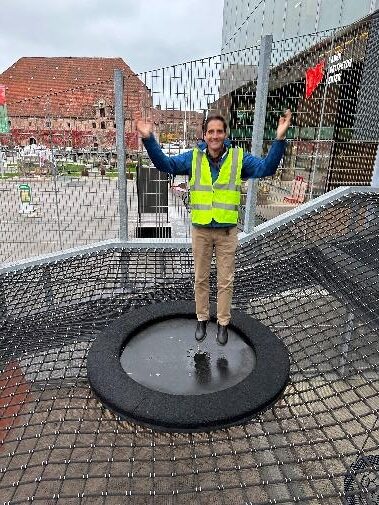 In the afternoon, researcher and urban designer Olivia Flynn from Gehl Architects led our group on a walking tour of civic spaces. We visited what once was an eight-lane road turned into a planted median with trampolines, chess tables and lots and lots of trees. This is the manifestation of a truly shared urban space. We passed by a school that used an adjacent plaza for a playground which also occupied by outdoor café tables, more bike lanes and food stalls. Many playgrounds in Copenhagen are staffed throughout the day with educators leading arts workshops, activities and answering questions to the many kids running around. Parents can feel comfortable having their kids walk by themselves to their local park encouraging independence and a greater sense of community.
In the afternoon, researcher and urban designer Olivia Flynn from Gehl Architects led our group on a walking tour of civic spaces. We visited what once was an eight-lane road turned into a planted median with trampolines, chess tables and lots and lots of trees. This is the manifestation of a truly shared urban space. We passed by a school that used an adjacent plaza for a playground which also occupied by outdoor café tables, more bike lanes and food stalls. Many playgrounds in Copenhagen are staffed throughout the day with educators leading arts workshops, activities and answering questions to the many kids running around. Parents can feel comfortable having their kids walk by themselves to their local park encouraging independence and a greater sense of community.
A City of Play
 Speaking of playgrounds, we had the unique treat of touring the offices of Monstrum – a Danish playground design firm who create and build giant and beautiful sculptures of animals, fairy castles and even jellyfish. One Monstrum designed playground included enormous climbable models of City Hall, local cathedrals and Parliament. Another playspace (this one created by Bjarke Ingles Group or BIG) featured a fabulous slide structure resembling a huge octopus. This reminded me of the Bridge Park’s Mussel Beach playspace (design by Studio Ludo) who have created an entire world of huge mollusks, seaweed climbers and driftwood balance beams in our 11,000 sq ft intergenerational playspace.
Speaking of playgrounds, we had the unique treat of touring the offices of Monstrum – a Danish playground design firm who create and build giant and beautiful sculptures of animals, fairy castles and even jellyfish. One Monstrum designed playground included enormous climbable models of City Hall, local cathedrals and Parliament. Another playspace (this one created by Bjarke Ingles Group or BIG) featured a fabulous slide structure resembling a huge octopus. This reminded me of the Bridge Park’s Mussel Beach playspace (design by Studio Ludo) who have created an entire world of huge mollusks, seaweed climbers and driftwood balance beams in our 11,000 sq ft intergenerational playspace.
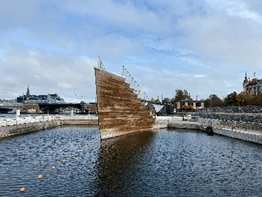 Remember how I mentioned that Copenhagen cleaned up their water so it’s now swimmable? City planners have now created “beaches” throughout the inner harbor with diving platforms, shallow and deep pools and public saunas along its banks. A closing tradition of the trip included a harbor plunge into the water. Even though it was only 44 degrees, I took the plunge which took my breath away, but was exhilarating. A fabulous way to wrap up a busy week.
Remember how I mentioned that Copenhagen cleaned up their water so it’s now swimmable? City planners have now created “beaches” throughout the inner harbor with diving platforms, shallow and deep pools and public saunas along its banks. A closing tradition of the trip included a harbor plunge into the water. Even though it was only 44 degrees, I took the plunge which took my breath away, but was exhilarating. A fabulous way to wrap up a busy week.
My biggest take away from the trip is that human centered cities start with a deliberate series of actions with local residents at the center of the decision-making process. Copenhagen didn’t become a green city overnight – this was the result of 40 years of investments to create a city that works for everyone. Washington DC is on a similar journey and working together we can great our own sustainable and equitable city right here in the nation’s capital.
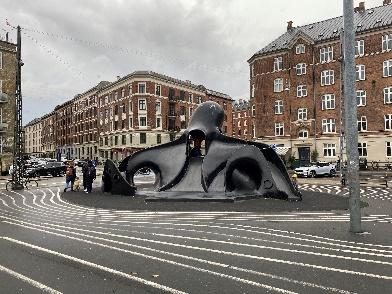
Scott Kratz
Senior Vice President, Building Bridges Across the River
Director, 11th Street Bridge Park



